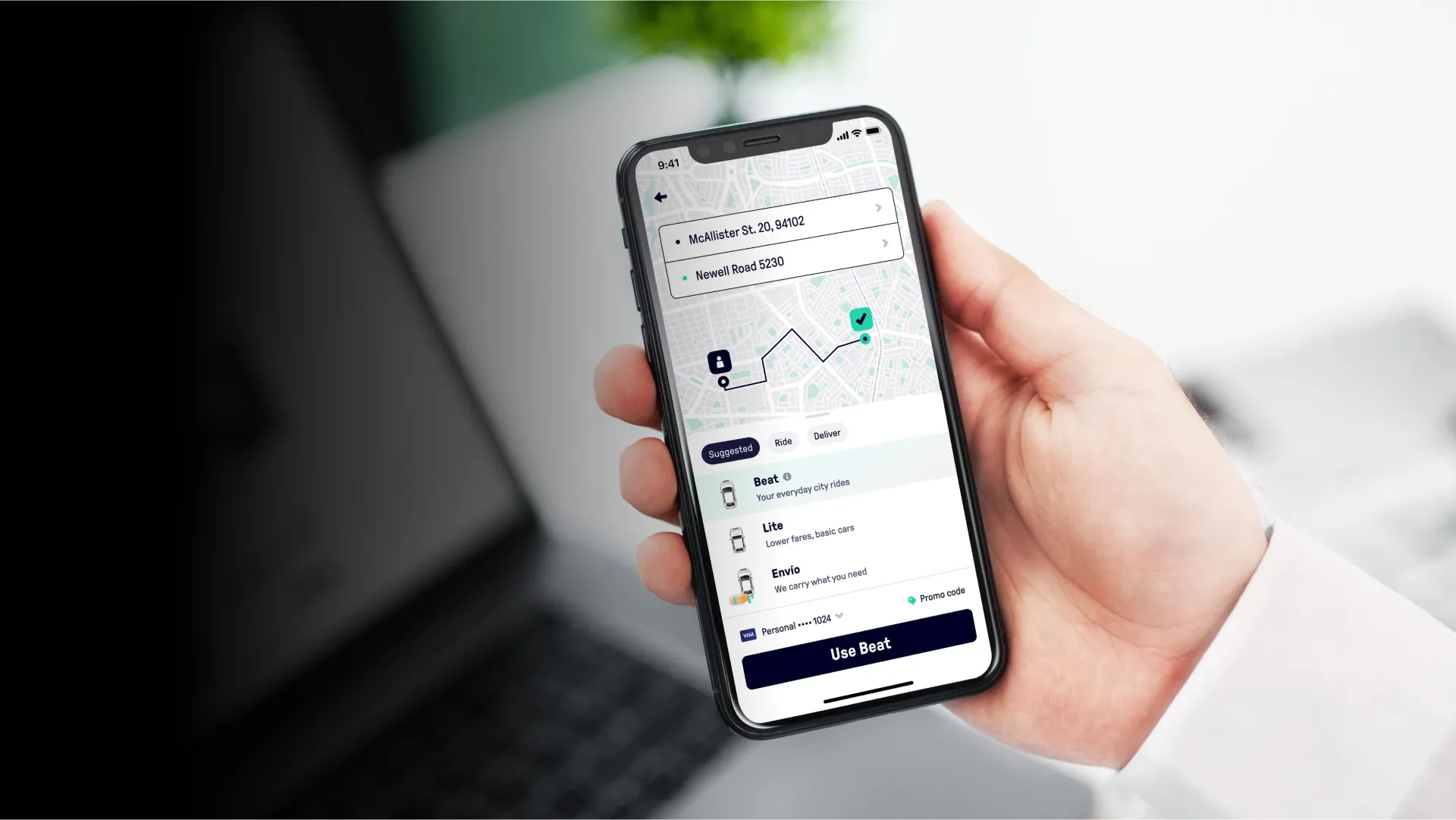Beat’s Ride-Hailing Service
Beat is a technology company and the fastest growing ride-hailing app in Latin America. The company was founded in 2011 and is part of the FREE NOW group, the ride-hailing joint venture of BMW and Daimler. Beat creates a new riding experience by connecting thousands of passengers with nearby available drivers in real-time. Through the app, you can request a driver 24/7.
Our experience with HiveMQ has been very good. We find the platform to be rock solid and the performance is very good. After using the HiveMQ platform, we saw tremendous improvement in session duration and observed reduced support tickets from drivers that did not get the rides.
Beat is more than an app that takes you from A to B. Beat exists to build technology for a better urban life and become part of people’s lives by making transportation in modern megacities more affordable, convenient, efficient, and safe while providing economic opportunities to thousands of people who wish to earn income as drivers. Beat is currently available in Greece, Peru, Chile, Colombia, Mexico, Argentina, with plans to expand to more countries in Latin America, and has a Tech Innovation and Engineering Hub in Amsterdam, in the heart of The Netherlands.
The company is currently the #1 ride-hailing app in its homeland Greece and Peru, #2 in Colombia, #3 in Chile, Mexico and Argentina, with more than 700,000 drivers registered while more than 24 million passengers are enjoying the service worldwide as of today. The development of cutting-edge technologies in all markets where Beat operates in is top priority. Athens along with the Tech Innovation and Engineering Hub in Amsterdam constitute the heart of the company’s product development, research and innovation. The Engineering Teams work on building the next generation stack for backend automation that will make the two-sided, passenger-driver marketplace more efficient.
“There has been a growing demand for on-demand rides in Latin American cities – where traffic congestion is common and network connectivity is unreliable. Beat aspires to bring the best of ride-hailing services to the masses irrespective of road and network conditions. So, we continuously aim to improve the efficiency and user experience of both driver and passenger apps. For this, real-time assured communication between a driver’s and a passenger’s mobile devices with our backend systems is a must!” said Sotirios Mantziaris, Senior Engineering Manager at Beat.
MQTT and HiveMQ: Enabling Improved Services for Beat
Beat’s services are powered by machine learning algorithms, which need powerful scalable support systems at the backend. The company’s home-grown proprietary system makes it difficult to maintain and scale for different ride-hailing use case scenarios.
An increase in support tickets from drivers due to lost messages coerced the company to rethink some of its asynchronous communications. To this end, the company started looking for a light-weight queue-based messaging service, which would not only help reduce lost messages but also help them scale and add new features in the future.
Beat opted to implement MQTT for its asynchronous communication needs because it is a lightweight, scalable, and reliable messaging protocol. Above all, MQTT is already proven to be a successful industry standard for real-time messaging and an ideal fit for mobile device connectivity. MQTT’s key features, such as Message Expiry, Retained Messages, Shared Subscriptions, Last Will & Testament, etc. were of great interest to the company.
In its journey to bring scalability to its system and to improve asynchronous communications, Beat looked at IoT solutions from some of the major cloud platform vendors. However, the company did not opt for them as a majority of them did not support MQTT 5. The company also evaluated a few MQTT platforms. However, these platforms did not live up to their expectations with respect to stability and manageability.
Beat’s search for a perfect MQTT platform that supports all MQTT versions ended at HiveMQ. Now, Beat uses the HiveMQ platform hosted on Kubernetes, which is running on AWS EC2 instances. As of today, the HiveMQ platform supports over 19,000 concurrent connections, thus enabling real-time connectivity of over 700,000 drivers and 23+ million passengers registered on the Beat app.
"Our experience with HiveMQ has been very good. We find the platform to be rock solid and the performance is very good. After using the HiveMQ platform, we saw tremendous improvement in session duration and observed reduced support tickets from drivers that did not get the rides. MQTT has been a true enabler in improving our services’ quality wherever it is implemented. The HiveMQ MQTT platform not only supports all features of MQTT 5 but is also efficient, fast, and very reliable. In the near future, we plan to scale and add more features using the HiveMQ platform."
Why HiveMQ is Beat’s #1 Choice for Implementing MQTT 5
Currently, Beat is using the HiveMQ MQTT platform in a few of its asynchronous communication use cases, such as:
Finding a driver in real-time: Wherever a passenger clicks on the search button to find a suitable ride, the company’s machine learning algorithms look up to find a suitable driver available in proximity. Once the algorithm finds the best match (driver), the back end systems use MQTT to connect to the driver’s device in real-time. Based on the acknowledgement from the driver, the ride is assigned to the passenger.
Result: Reduced support tickets from drivers by 66%, as loss of messages was negligible and session duration improved by 400%. Assured connectivity from a passenger to a driver even in unreliable networks improved the app’s user experience.
Avoiding unnecessary message transmission: The company is using MQTT’s features such as retained messages, Last Will and Testament (LWT), etc. to find out which driver is connected to their systems and is available for a new ride. Only the drivers connected to their systems receive the messages.
Result: Improvement in system’s efficiency and user experience, because the company’s back end does not send any messages to the driver’s app if it is not connected to it.
"We found MQTT to be more efficient and faster compared to other solutions in the market. In the future, Beat plans to use MQTT for all asynchronous communication, for passenger application, and leverage it as a bi-directional messaging solution for key marketing initiatives.”


